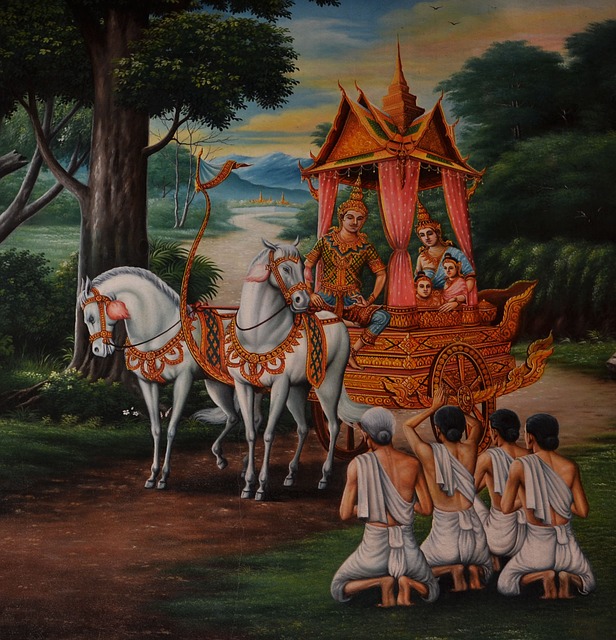Is there a spiritual existence of man?
WHAT IS THE SOUL OF A MAN?
Basically, the German language does not clearly define the concept of the soul. There are different aspects of the human being, which we call partly soul, partly spirit. Specifically, the term is most often associated with one or both of the following ideas:
1. the soul as psyche:
In this view, the soul represents the sum of man’s animating, feeling, and thinking powers. The soul is understood to be mobile and moving, often a subtle substance – hence the term subtle – which is responsible for processes of growth, movement, sensation and thought. The term “psyche” has its roots in ancient Greece. In everyday life we confront the manifestations of the psyche: We grow, we feel, and we think. Psychology also largely refers to the psyche, as its name implies. https://www.tattva.de/durchbruch-zum-menschsein/
2. the soul as atma:
Understood in this way, the term “soul” refers to the eternal and unchanging spiritual core of our beingness. In short, the Atma is what remains when we exclude everything else: Not our body, not our senses, not our emotions, not our thoughts. That which underlies all of this. Atma is the silent observer who becomes aware of sense impressions, emotions and thoughts. German translations of the Indian scriptures, especially the Vedanta philosophy, prefer to use this concept of the soul. More about the eternal soul part and its relation to God-Goddess can be found in the following article: https://www.tattva.de/wir-sind-alle-ewige-personen/.
THE SOUL FROM A PHILOSOPHICAL AND RELIGIOUS PERSPECTIVE
In many traditions, the soul is tripartite. The classical Indian doctrine of the soul, as well as the Judaeo-Christian tradition of Kabbalah and, last but not least, many authoritative representatives of Greek philosophy, such as Plato and Aristotle, propose a tripartite view of the soul.
The tripartite division of the soul shows itself particularly plausibly in the allegory of the four realms.
The realm of the minerals, the plants, the animals and the humans:
The realm of minerals symbolically represents the inanimate body, i.e., categories such as mass, volume, weight, shape, color, etc. These parameters apply to both stones and a corpse. The physical body is called Sthula Sharira in Sanskrit.
Now the realm of plants symbolizes the vegetative part of the soul. In Sanskrit this is called Linga Sharira. Modern western esotericists mostly speak of etheric or energy body. It often unconsciously runs functions: growth, cell formation, formation of organic material, metabolism, wound healing, reproduction, etc. Even the modern natural sciences now widely recognize that all these processes cannot be reduced to purely physical laws. The miracle of organic life, the splendor of the living, which shines and smells towards us from every blossom, takes its beginning here. https://www.tattva.de/lebendiges-wahrnehmung-und-wissenschaft/
Know that what permeates the entire body is indestructible. No one is able to destroy the imperishable soul.
The animal kingdom represents the second part of the soul. The sensual perception and resulting desires and aversions, the free movement of the limbs and locomotion. Our emotions and instincts root in this part of the soul. The Indians call it Kama Rupa, in the West they call it the astral body.
MANAS
Lastly, the soul represents the realm of the human being itself, called manas in Sanskrit, which is often called mental body in German-language literature. Manas (with the word root M-N-S) is related to the Latin “mens, mentis” and above it to the word “mental”, even to the word “human” itself. Manas is thus responsible for the mental processes that distinguish man from the animal in terms of outlook: Self-consciousness, use of symbols, inner reflection, verbal language, rationality, abstract and logical thinking, etc.
Each part of our soul and also of our body have in this way their analogue in the eternal book of nature.
A spiritual path is a never-ending journey of the soul into the deeper levels of being. Spiritual places of power, like in India, can support our spiritual growth.
PETER SLOTERDIJK: “The separation of the soul from the body”
THE SOUL IN THE BHAGAVAD-GITA
The Bhagavad-gita is the most important spiritual scripture of ancient India. It distinguishes the three subtle elements manas, buddhi and ahankara from the soul, atma. It describes manas as the mind, buddhi as the higher intelligence, and ahankara as the false ego that misidentifies as possessing and acting. These subtle elements, though not physical, are still part of the material plane. They are subtle, but they are still material. Material causes do not influence the soul. It is indestructible and eternal:
- Know that which permeates the entire body is indestructible. No one is able to destroy the imperishable soul.
(Bhagavad-gita, 2.17) - For the soul there is neither birth nor death. Also, once it has been, it never ceases to be. It is unborn, eternal, everlasting, immortal and primordial. It is not killed when the body is slain.
(Bhagavad-gita, 2.20) - “The God, I think,” Socrates continued, “and the idea of life itself, and whatever else there is immortal: that these never perish, I think all agree. … But if the immortal is at the same time indestructible, the soul, if it is immortal, must also be imperishable.”
(Plato, Phaidon 106b-e)
The soul in the Bhagavad-gita

THE SOUL FROM THE POINT OF VIEW OF NATURAL SCIENCE
Natural science has not dealt with the soul since the Enlightenment. It considers spiritual phenomena as speculative and unscientific. And it only recognizes the materially measurable. In large parts of natural science this paradigm still prevails. However, we are living in a time of upheaval in which this world view presents a huge question. More and more natural scientists are setting out to explore spiritual phenomena as well. https://www.tattva.de/morphogenetisches-feld-seele-und-atmosphaere/
A pioneer in this field is the English biologist Rupert Sheldrake, known for his theory of morphogenetic fields. Can the soul be described as a field?
In particular also the newest realizations of quantum physics show us that matter is only a small portion of our entire existence. One speaks of 0.00000001 to 5 percent.
See also our focus issue Tattva Viveka No. 70: “Is there matter? Spirit – Information – Quantum Physics.

SOUL AND REINCARNATION
Also and especially in the question of reincarnation it is necessary to distinguish between the different concepts and parts of the soul. Much has already been written and said about it and it probably remains in the end an empirical question for every single human being. Nevertheless, let us have a look at the traditional esoteric view on this subject in a very simplified way:
The etheric body passes away together with the physical body. The two latter parts of the soul, the astral and mental body, then lead a further life in the astral plane, which is called kama loka in Sanskrit and resembles the world of dreams. The karma is processed here. Subsequently, the astral body dies the second death and a part of the mental body moves into deva loka, the seat of the gods, where it can recover from its incarnation and the causes for the coming incarnation are set.
The Atma is always present in all this, as the eternal, unchanging observer, our innermost self.
Spiritual wisdom teachings transmit that our souls have consciously chosen to enter this body and this life. This decision may have had many reasons, but the desire to grow and mature drove these. And this in each and every one of us. In addition, we commit actions here on earth that entail karmic consequences and that must be cleared up by us again.
Also our ancestral field, the lives and experiences of our ancestors, shapes the wealth of experience of our soul, and points the incarnated soul to unresolved karmic actions https://www.tattva.de/ahnengeister-oder-ahnenmuster/. But not only in our past incarnations did we commit actions that resulted in consequences. This can also happen in the here and now. Life itself is our highest teacher.

SPIRITUALITY AND SCIENCE
Spirituality and science represented an unbridgeable gap for thousands of years. Today, more and more people are opening up to both paths of knowledge: spirituality is a path of the heart (bhakti-yoga) in the classical sense, science is a path of thought (jnana-yoga).
It is now necessary to dissolve this either/or logic and achieve an integrated mental-emotional level. As Aristotle already knew, the training of heart and mind was equally necessary. Today, these once seemingly contrary paths seem to be converging and reaching a higher level of integration.
A post-materialistic science is the approach to integrate the different levels of human and spiritual existence and to devalue neither material nor spiritual phenomena. It needs a spiritual science that examines spiritual phenomena with scientific honesty.




